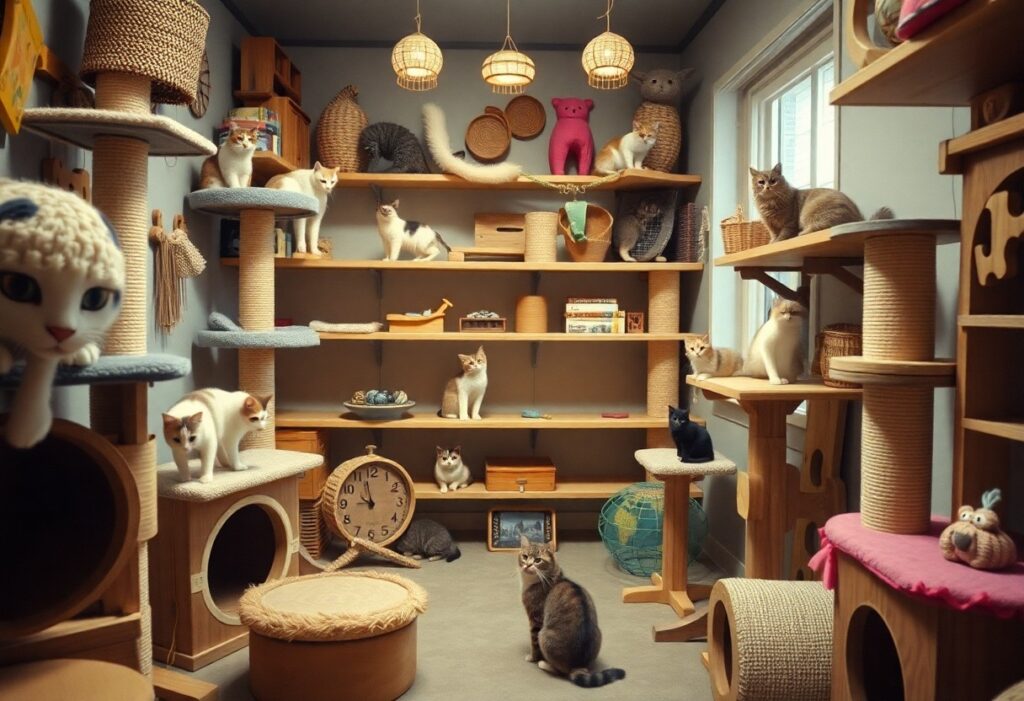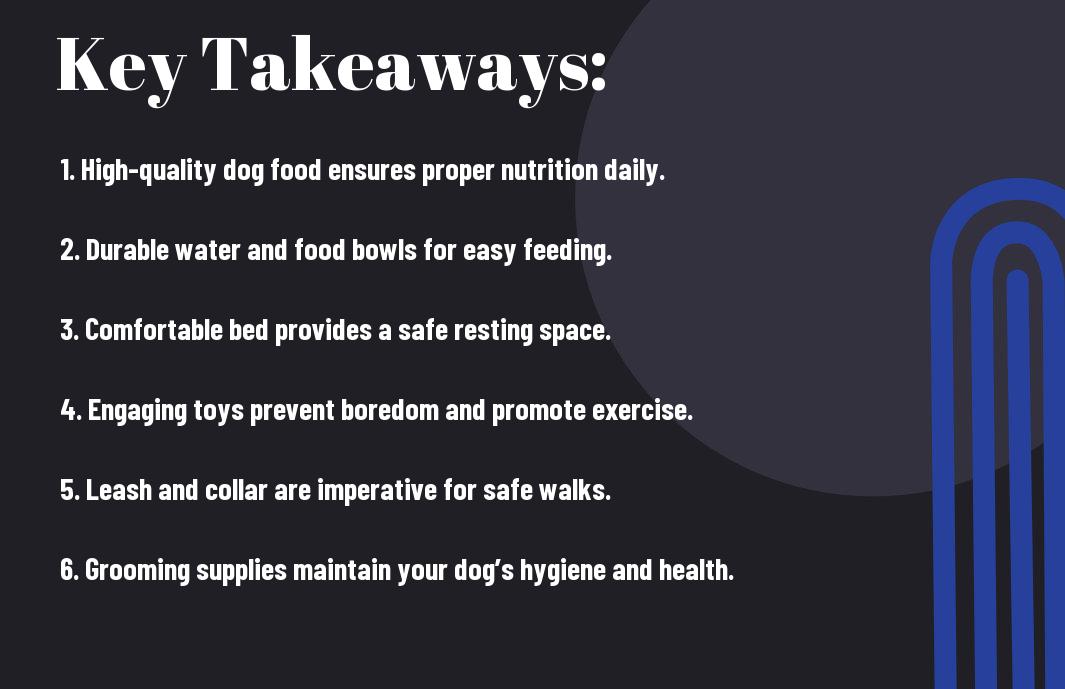It’s imperative to understand that socializing your new bird will help create a trusting relationship and ensure their emotional well-being. As you bring your feathered friend into your home, you’ll want to employ strategies that encourage positive interactions and minimize stress. By gradually introducing them to your environment and engaging with them consistently, you can help your bird feel safe and comfortable. In this post, you’ll discover expert tips and techniques to effectively socialize your new pet and foster a loving bond that lasts a lifetime.


Understanding Bird Behavior
A >thorough understanding of bird behavior is vital when it comes to socializing your new feathered companion. Birds are highly social creatures by nature, but their behavior can vary significantly depending on their species, past experiences, and individual personalities. As you commence on the journey of socializing your new bird, it is crucial to recognize the ways in which they communicate and express their emotions. This will pave the way for a more fulfilling relationship built on trust and mutual respect.
Common Socialization Challenges
Challenges often arise when attempting to socialize a new bird, mainly due to their innate instincts and previous experiences. Birds are prey animals, meaning their survival instincts may influence their behavior in unfamiliar settings. If your bird exhibits signs of fear or anxiety, such as excessive vocalization or body posture that indicates distress, it’s vital to be patient and allow them time to acclimate to their new environment. Rapid changes, sudden movements, or loud noises can scare them, complicating the socialization process.
Furthermore, past traumatic experiences can significantly impact how your new bird interacts with you and other humans. It’s not uncommon for birds to show signs of mistrust or fear based on previous ownership situations. This can lead to behaviors such as biting, screaming, or an unwillingness to engage. By understanding these challenges and approaching them with empathy and patience, you can foster a safer and more supportive environment that encourages smooth socialization.
Recognizing Body Language
On top of understanding your bird’s behavior, recognizing their body language is a vital component of socialization. Birds communicate a wide range of emotions through subtle physical gestures. For instance, when a bird fluffs up its feathers, it may be feeling relaxed, but if it stands tall with feathers sleek and eyes wide, it could denote aggression or fear. Being attuned to these signals can help you tailor your interactions to better support your bird’s emotional needs and make informed decisions about how to proceed in your socialization efforts.
A comprehensive grasp of bird body language allows you to respond appropriately, reducing the risk of misunderstandings that could hinder the bonding process. Signs of discomfort, such as a bird turning its head away, leaning away from you, or rapid tail wagging, should be approached with caution. Conversely, positive signs like preening, soft cooing, or relaxed posture indicate your bird may be ready to engage. By observing these important and dangerous details in their body language, you will be better equipped to make socialization a positive experience for both you and your feathered friend.
Preparing Your Environment
Little changes in your environment can significantly impact your new bird’s adjustment to its surroundings. A well-prepared space not only promotes comfort and security for your avian companion but also aids in building a strong bond between you and your feathered friend. Taking the time to establish a suitable atmosphere helps your bird feel safe, encourages exploration, and reduces stress during the socialization process.
Creating a Safe Space
Any bird, regardless of species, needs a designated safe space where it can retreat when feeling overwhelmed. This area should be free from loud noises, drafts, and potential hazards. Make sure the cage is spacious enough, with vertical space to encourage climbing, and includes perches of different sizes to help your bird feel secure while observing its new surroundings. Ensure the space is decorated with natural materials, such as untreated wood perches and toys, as this can create an inviting and familiar environment.
Setting Up Interaction Zones
To maximize socialization, you should designate specific interaction zones around your home that are comfortable for both you and your bird. These spots should be quiet and free from distractions, where you can engage with your bird through gentle conversation, training sessions, or simply spending quality time together. Consider placing a play stand in one of these zones, where your bird can explore outside of its cage while still feeling secure in its environment.
For instance, establishing multiple interaction zones allows for variety in your bird’s activities and experiences. You could create a cozy area near a window for natural light, which not only benefits your bird’s mental health but also stimulates its senses with sounds and sights from the outside world. Placing different toys and engaging activities in each zone keeps your bird entertained while preventing any negative associations with specific areas in your home. Always keep in mind that a well-structured environment fosters a positive atmosphere, making your bird more open to socialization and interaction with you.

Techniques for Socialization
Despite the common misconception that birds are naturally solitary creatures, effective socialization techniques play a crucial role in helping your new feathered friend adjust to their new environment and bond with you. By employing systematic methods, you can foster a trusting relationship that encourages your bird to feel safe and comfortable around you and others. This not only improves their mental health but also enhances your interaction and enjoyment of your pet.
Gradual Introductions
Socialization begins with gradual introductions to various environments and people in your home. Start by allowing your bird to get used to their cage and surroundings, and then slowly introduce them to you by spending time nearby without overwhelming them. It’s important to take your time with this process; rushing things can lead to fear and stress for your bird. As you observe your bird’s body language, you’ll learn when they are ready to move onto the next step, whether that’s gentle handling or bringing them into wider social settings.
Additionally, consider introducing your bird to other family members or pets gradually. Always monitor these interactions closely, and ensure that your new bird feels secure and unthreatened. This balance of patience and observance is key in creating a positive foundation for socialization.
Positive Reinforcement Methods
For effective socialization, employing positive reinforcement methods is one of the most powerful techniques at your disposal. This approach involves rewarding your bird for displaying desired behaviors, such as approaching you, making eye contact, or even allowing you to touch them. By offering treats, praise, or toys as incentives, you create a positive association that encourages your bird to engage with you. Remember that consistency is key; use the same rewards and cues to help your bird connect the behavior with the positive outcome.
Using positive reinforcement allows your bird to learn at their own pace, reducing any feelings of fear or anxiety. This method not only helps to build trust but can also be beneficial in shaping their overall behavior in your home environment.
Utilizing Toys and Activities
For added enrichment and socialization, consider utilizing toys and activities in your routine with your new bird. Birds are naturally curious and playful, so providing a variety of engaging toys can stimulate their minds and encourage interaction. You may start by placing toys within their cage and gradually moving them into smaller play areas, eventually introducing them to shared playtime with you. Activities such as gentle play or training sessions using toys can greatly enhance your bond.
Understanding your bird’s preferences for certain toys can help streamline this process. Some birds may prefer foraging toys, while others might enjoy swings or bells. The key is to pay attention to what captivates your bird, as this understanding can further facilitate connection during playtime.
Ongoing Care and Engagement
Many bird owners often overlook the importance of ongoing care and engagement in the process of socializing their new feathered friends. Developing a strong bond with your bird requires consistent interaction and a tailored approach that caters to their unique personality and needs. By prioritizing daily interaction and establishing a routine, you not only help your bird feel secure but also promote their overall well-being and happiness.
Daily Interaction Strategies
Interaction with your bird should be a meaningful part of your daily routine. Dedicate time each day to talk to your bird, sing, or play music that they enjoy. Engaging in these activities allows your bird to become accustomed to your voice and presence, fostering a sense of trust and comfort. You can also introduce toys and activities that stimulate their mental and physical health—such as puzzles or foraging toys—to keep their mind active while also encouraging playfulness.
In addition to verbal interaction, consider handling your bird regularly. Start by gently allowing them to step onto your finger or hand, and gradually increase the duration of these sessions as your bird becomes more comfortable. Be sure to reward them with treats or praises to reinforce positive behavior and increase your bird’s confidence in your presence.
Maintaining a Routine
Interaction must also be paired with the stability of a consistent routine. Birds thrive on predictability, which helps reduce anxiety and fosters a calmer environment. Establish a daily schedule that includes set times for feeding, play, and social interaction. This consistent approach reassures your bird and helps them understand when to expect your attention, thereby creating a secure atmosphere.
It is important to remain adaptable within that routine to accommodate your bird’s developing personality or any changes in their behavior. Remember that some days may require more engagement than others, depending on how your bird feels or reacts. By maintaining a strong yet flexible routine, you will not only strengthen your bond but also promote your bird’s mental well-being and emotional stability. The key is to ensure that your bird knows they can rely on your presence and care consistently, encouraging a deeper relationship over time.
To wrap up
To wrap up, socializing a new bird is an vital step in fostering a strong bond between you and your avian friend. By introducing your bird to various environments, sounds, and people gradually, you can help it build confidence and decrease fears. Remember to always be patient and attentive during this process; your bird will communicate its comfort levels through its body language and vocalizations. Furthermore, spending quality time engaging with your bird through interactive play will not only enhance your relationship but also stimulate its intellect, contributing to its overall well-being.
Additionally, it’s vital to respect your bird’s individual personality and make adjustments based on its specific needs and preferences. Whether it’s through positive reinforcement, patience, or gentle coaxing, your efforts will create a safe atmosphere that promotes socialization. Ultimately, a well-socialized bird will be happier and healthier, providing you both with a more rewarding and fulfilling companionship. Invest time and love into this process, and you will be rewarded with a loyal and affectionate feathered friend.
FAQ
Q: What is the best age to start socializing a new bird?
A: The best age to start socializing a new bird is as soon as you bring them home. Young birds, especially those under six months old, are often more adaptable and open to new experiences compared to older birds. However, adult birds can also be socialized with patience and consistent positive interactions. Start by allowing the bird to acclimate to its new environment for a few days before initiating direct interaction. It’s imperative to approach them gently and allow them to come to you at their own pace.
Q: How can I encourage my new bird to trust me?
A: Building trust with your new bird takes time, patience, and consistency. Begin by spending time near the bird’s cage without trying to handle it. Talk softly to your bird and offer treats through the bars of the cage. Once your bird seems comfortable with your presence, you can gradually start to open the cage door and allow them to come out freely when they feel ready. Using positive reinforcement, such as treats and praises, each time your bird interacts with you will help strengthen the bond and build trust over time.
Q: What are some effective techniques for socializing a new bird with other pets or family members?
A: When socializing a new bird with other pets or family members, it’s crucial to do so gradually and safely. Start by keeping the bird in its cage and allowing other pets or family members to observe from a distance. Encourage family members to speak softly or offer treats to the bird to foster a positive association. Supervise all interactions and ensure the safety of your bird at all times, especially if introducing them to dogs or cats. Over time, as the bird becomes more comfortable, you can create controlled and positive interactions to help them acclimate to your household environment.










